Breeders may know which traits are preferred by farmers, but often times there is a disconnect between breeding for market demand and what crop biology can produce. Translating farmer preferences into biologically feasible product concepts is challenging without a thorough framework. Trait discovery has the potential to maximize the likelihood of success for NARIs in new crop varietal development.
The challenge
Our approach
We take an interdisciplinary approach that sets us apart. Our trait discovery team works with other plant and social sciences disciplines as an integrated network of support, which spans the various demands of the product development lifecycle. By forming linkages between previously siloed disciplines, we aim to develop tools that can enhance and scale capacity for national breeding programs. Our trait discovery team helps NARIs develop breeding product profiles through rigorous goal setting, hypothesis testing and biological feasibility.
“Trait discovery integrates both end user demand with biological feasibility. Doing so improves the chances of successfully breeding for traits of interest.”
Geoffry MorrisTrait discovery lead
Recent highlights
GoHy
This applied scientific method approach is being applied in Centers of Innovation and Quick Wins
Framework for trait discovery
A theoretical platform for Centers of Innovation to iterate their goals
Training
Helping Centers of Innovation identify and address gaps in trait discovery through capacity building
Research from our experts
- GoHy ACT Webapp will train scientists on the scientific method and how to best apply it to their crop improvement programs
- Framework for trait discovery as a theoretical platform for Centers of Innovation to iterate, plan and execute goals
- Trait package concept, which includes developing a trait map, trait marker and trait donors
- Moving from “Seed bank-to-Seed Bag,” which involves identifying trait exotic material, identifying trait genetics and trait pre-breeding
- Training slides for GoHy, an applied scientific method
- Genetic characterization of a Sorghum bicolor multiparent mapping population emphasizing carbon-partitioning dynamics
- Crop modeling defines opportunities and challenges for drought escape, water capture, and yield increase using chilling-tolerant sorghum
- Genome Sequences of 42 Bacteria Isolated from Sorghum bicolor Roots
- Dissecting Adaptive Traits with Nested Association Mapping: Genetic Architecture of Inflorescence Morphology in Sorghum






